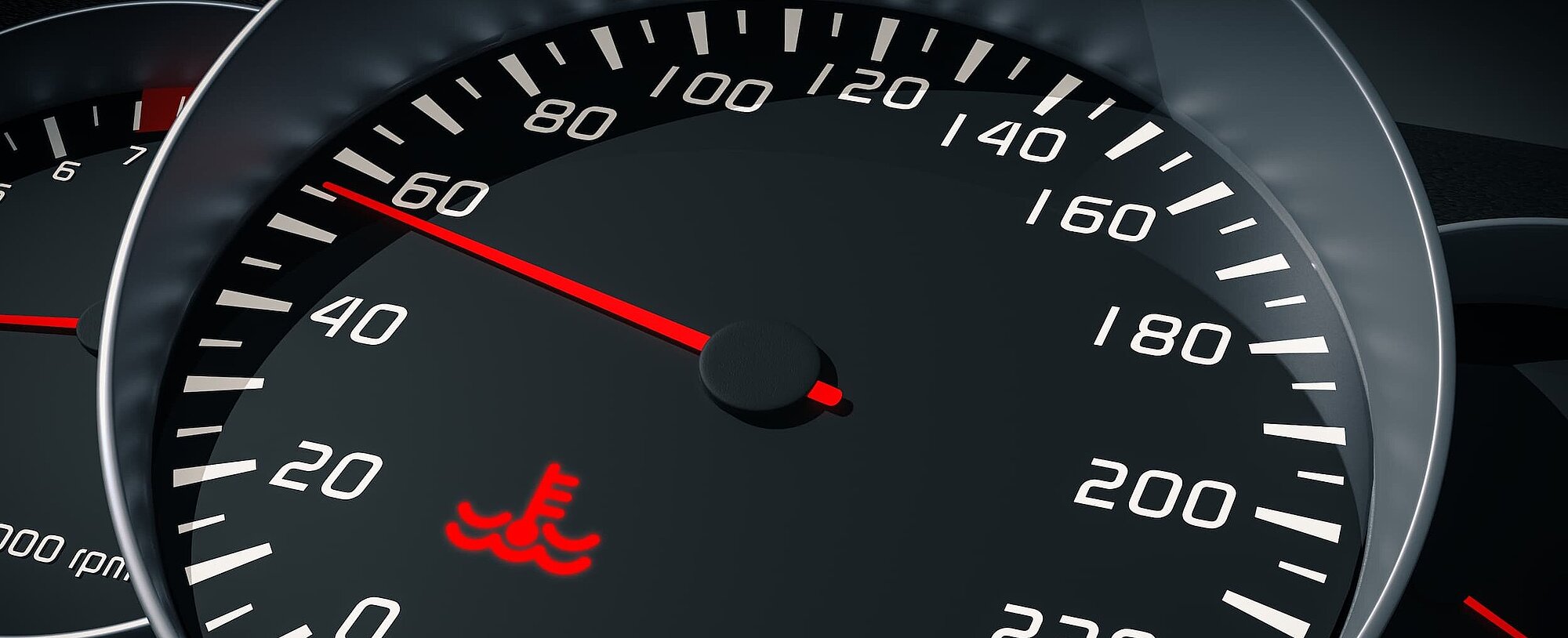- The coolant in your vehicle needs to be replaced regularly according to the manufacturer's specifications
- GLYSANTIN® provides year-round protection for engines – against frost, overheating and corrosion
- Find the right coolant for your car with the GLYSANTIN® product finder
Unusual increases in engine temperature while driving or coloured pools of liquid or puddles under your car indicate that there is something wrong with your radiator. This requires immediate action – and we will help you.
A vehicle’s cooling system is a closed and highly complex one. It ensures that the temperatures in the vehicle remain stable when driving and that the engine and electronics continue to work as intended. As such, proper handling of coolant is especially important. BASF’s GLYSANTIN® coolant, which is sold by BTC Europe, is a premium coolant that provides threefold protection for the cooling system. It raises the boiling point of the coolant, thereby preventing the system from overheating. It also lowers the freezing point, which protects the liquid against frost.
GLYSANTIN® products also create a protective film that prevents the motor and the individual components of the cooling circuit from corrosion. The coolants are characterized with their good material compatibility and low foam generation thanks to the additives used in the mixture. The GLYSANTIN® concentrate should be mixed with distilled or demineralized water to significantly reduce deposits in the engine and cooling system. If this is not available, mixing with water up to a maximum hardness of 20° dH (3.5 mmol/l) is possible.
Regularly replace coolant
If the coolant warning light comes on while driving, it’s time to replace the coolant. However, even if the warning light is not illuminated, it is recommended to check the coolant level regularly. Generally, the coolant level in your engine should not change. If there is too much or too little coolant in the tank, it may be a sign that your engine or cooling system is defective. In this case, the coolant should be topped up and a service scheduled.
Engine coolant should also be changed regularly, as the protective additives in the coolant can degrade over time. “As a rule, the replacement of the coolant should be carried out by specialists in a garage,” says Stefan Herrmann, Account Manager for the DACH Automotive & Industrial Fluid Solutions segment at BTC Europe. The replacement intervals depend on the individual specifications of the manufacturer. According to the expert, newer models often only require the coolant to be replaced every four years. In many older vehicles, however, the coolant still needs to be replaced every two years. “This development saves costs and is great for environmental protection,” says Herrmann.
Refilling coolant is very easy with the right GYLSANTIN® Ready Mix product. It can be used directly and is pre-mixed to the correct ratio.
Our Expert
Stefan Herrmann has been an Account Manager DACH Automotive & Industrial Fluid Solutions at BTC Europe since 2018. He is responsible for the sales and marketing of BASF GLYSANTIN® as well as base oils and additives for the lubricants industry. “I have been working in sales with a great passion for 30 years,” says Herrmann. He shows the same passion when riding his Vespa scooter during the summer months – preferably through the gentle hills in Tuscany. Of course, the Vespa’s engine is also cooled with GLYSANTIN® from BASF.


